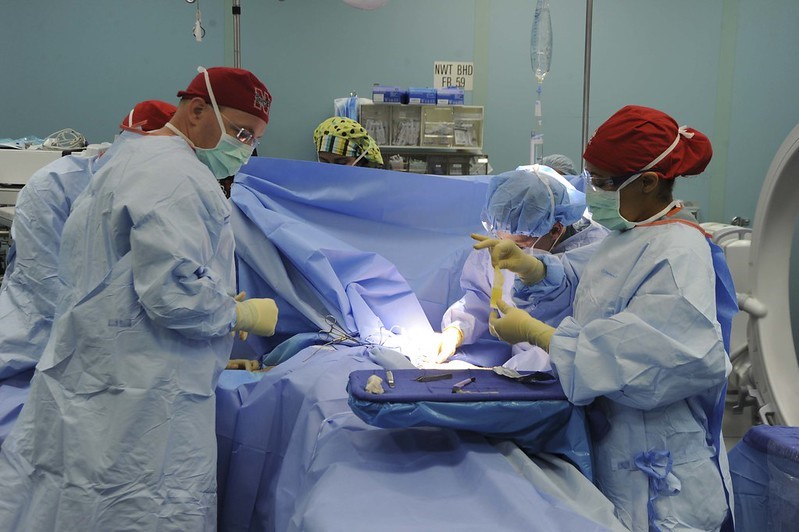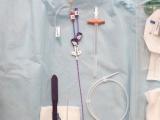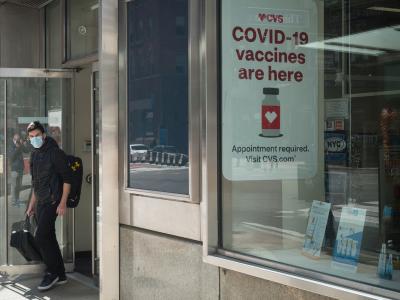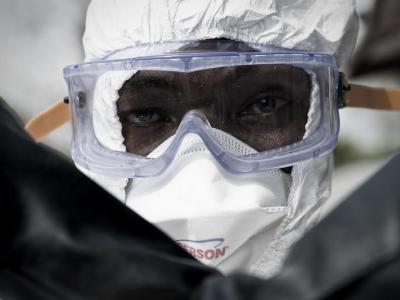A supplement published last month in Clinical Infectious Diseases provides a window into the evolving picture of antimicrobial resistance (AMR) in low- and middle-income countries and how it's been affected by the COVID-19 pandemic.
The supplement includes 17 papers that show substantial increases in broad-spectrum antibiotic use, multidrug-resistant infections, and previously uncommon resistance genes in hospitals in Latin America during the pandemic, along with studies that show high baseline rates of AMR colonization in hospitals and communities in Southeast Asia even before the pandemic. And many of these countries lack the resources needed to address these issues.
In a world where infectious disease (both viral and bacterial) have no respect for borders, the supplement highlights a concern shared by infectious disease experts and public health officials alike: The next deadly pathogen could be right around the corner.
CIDRAP News recently spoke with supplement editor Fernanda Lessa, MD, MPH, the Centers for Disease Control and Prevention's (CDC's) Team Lead for international healthcare-associated infections and AMR, about the AMR picture in low- and middle-income countries, and how the CDC can help these countries limit the spread of drug-resistant pathogens. The conversation has been edited for length and clarity.
CIDRAP News: What are some of the major themes that emerge from the studies in this supplement?
Fernanda Lessa: I think that, first and foremost, one of the things that we observed was alarmingly high levels of antimicrobial resistance colonization, both in hospitals and communities, in low- and middle-income countries. And that was happening even before COVID-19. There are seven papers showing this high level of antimicrobial resistance—up to 40 times higher than in Europe or in the United States.
The second thing that the supplement shows is that there was an increased use of antibiotics in several countries in Latin America during the COVID-19 pandemic, including both inpatient as well as outpatient settings. Third, there was a rapid spread of antimicrobial resistance genes in hospitals, and a high number of antimicrobial-resistant infections, in several countries during the COVID-19 pandemic, which created a perfect storm for transmission.
There was a rapid spread of antimicrobial resistance genes in hospitals, and a high number of antimicrobial-resistant infections, in several countries during the COVID-19 pandemic, which created a perfect storm for transmission.
And the last thing that I would point out is a paper from a neonatal intensive care unit in India showing that bloodstream infections in neonates were not the result of maternal colonization, but rather nosocomial transmission. So all these papers together, they really call attention to the need to put more investment [in these countries] and improve infection prevention control and antimicrobial stewardship programs.
CIDRAP News: As you noted, one of the topics covered in several of the papers is significant increases in antibiotic use in Latin American hospitals during the pandemic. Part of that early on—as was the case throughout the world—was clinical uncertainty and lack of treatment options. But does it highlight a need for stronger antibiotic stewardship in these settings as well?

Fernanda Lessa: Absolutely. There are several papers in the supplement that show the absolute need for antimicrobial stewardship programs [in Latin America]…and we're soon going to know more about whether what we saw in Latin America has also been observed in other countries. We're doing a very similar study with several healthcare facilities in Asia.
But one thing that was very interesting in one of the studies from Latin America that I think is important to highlight is that the increase in antibiotic use was not driven by patients in intensive care units [ICUs]; it was actually driven by non-intensive care unit patients. And one of our hypotheses is that there were a lot of resources during the pandemic devoted to the ICU patients and maybe the antimicrobial stewardship activities decreased in the non-ICU patients.
CIDRAP News: Another paper deals with barriers to stewardship in Latin American hospitals. Can you talk about some of those barriers? And do you think these same barriers exist in other low- and middle-income countries?
Fernanda Lessa: Yes, I think that what we saw in those hospitals in Latin America is probably true for other countries. And just to summarize quickly, one in three hospitals that were evaluated in that paper either had inadequate or basic antimicrobial stewardship programs. We are doing a similar assessment in hospitals in Asia and Africa as well, so we should know more soon.
But one critical thing that this paper highlights is that there are really inadequate technical and human resources for stewardship. And that has been a problem across the globe. It's very difficult to sustain antimicrobial stewardship programs when you don't have dedicated technical and human resources. And the other thing that came up in this paper as a major issue is the lack of leadership support for antimicrobial stewardship programs at the hospital level and also at the public health level in those countries.
CIDRAP News: As you noted, there are several studies that look at the prevalence of colonization with antibiotic-resistant bacteria in hospitals and communities. Again, these are countries where AMR data have been limited. Does colonization prevalence help fill in the picture on the burden of AMR in these countries?
Fernanda Lessa: Yeah, and I'm glad that you are you're asking this question, because I think that it's super, super important. The studies that you are referring to are all from the Antibiotic Resistance in Communities and Hospitals [ARCH] consortium. To my knowledge, this is the first group of studies that reveal the burden of AMR colonization in low- and middle-income countries.
What we know from low- and middle-income countries is that infection surveillance is difficult, because it requires clinicians to order the [bacterial] culture and requires good laboratory access.
What we know from low- and middle-income countries is that infection surveillance is difficult, because it requires clinicians to order the [bacterial] culture and requires good laboratory access. And data from the community require the patient to go to the hospital for you to understand if that patient has antimicrobial resistance.
What the ARCH studies provide is a great picture of what's going on in the communities as well as in the hospitals without relying on physicians to request the blood culture or any type of clinical culture; it's us going there and collecting the specimens and testing those colonization specimens for antimicrobial resistance. So I think that it is a unique set of studies that really calls attention to the huge burden of antimicrobial resistance in low- and middle-income countries, both in the community and in the healthcare setting.
Another point that I think is important for people to understand is that those persons who are colonized [with antibiotic-resistant bacteria] can transmit antibiotic resistance pathogens and genes even without infection. So once we detect colonization, we can implement infection prevention control measures to avoid the spread of that antimicrobial-resistant pathogen.
CIDRAP News: In the introductory paper, you and CDC colleague Dawn Sievert write about the CDC’s Global Antibiotic Resistance (AR) Laboratory and Response Network and the Global Action in Healthcare Network, and the role they can play in improving the detection of resistant pathogens globally. How can these programs help countries with limited surveillance capabilities?
Fernanda Lessa: Back in December 2021, CDC launched the Global AR Lab and Response Network. This is a broad-reaching, One Health approach to improving detection of antimicrobial resistance threats and preventing those threats from spreading globally. It spans nearly 50 countries and works with more than 20 organizations across the globe to really build laboratory capacity. And that will help with the detection of antimicrobial-resistant pathogens and then rapid response to those pathogens. Within the Global AR Lab and Response Network, we have the ARCH Consortium, and we also have the Global Action in Healthcare Network [GAIHN]. Many of the countries highlighted in the supplement participate in this network.
It's bringing several countries together to improve their capacity to detect, respond, and prevent those threats.
The goal of GAIHN is to prevent, detect, and respond quickly to antimicrobial-resistant threats in healthcare facilities. And we do that by improving laboratory capacity, surveillance capacity, and infection prevention control capacity at those facilities that participate in the network. I think it's a huge initiative, because I think it brings together several countries and provides a platform for sharing lessons learned, training opportunities, standardized instruments for data collection, and data for action. So I think that GAIHN is an important program that CDC is establishing. It's bringing several countries together to improve their capacity to detect, respond, and prevent those threats.
CIDRAP News: Do you think the CDC’s efforts to address AMR globally could help limit the emergence and spread of these pathogens in the United States?
Fernanda Lessa: The goal of our efforts here at the CDC is really to rapidly detect and control the emergence of antimicrobial-resistant threats at healthcare facilities before they cross borders and spread to other countries, including the United States.
An example we've seen is the emergence of New Delhi Metallo-beta-lactamase, which is a highly resistant gene, in India back in 2008. By 2010 several countries—including the United States, France, and Turkey—were detecting this resistance gene. We want to avoid that. And this is the reason for these initiatives. It is really to bring those countries together, to help them to build their infrastructure and their capacity so they can detect and act before these pathogens cross borders.























